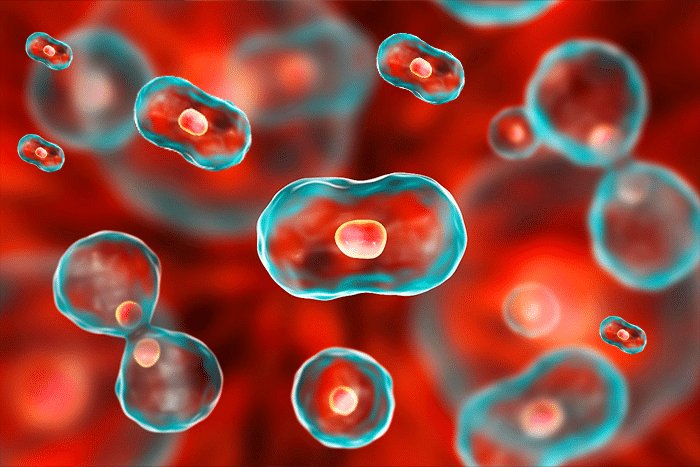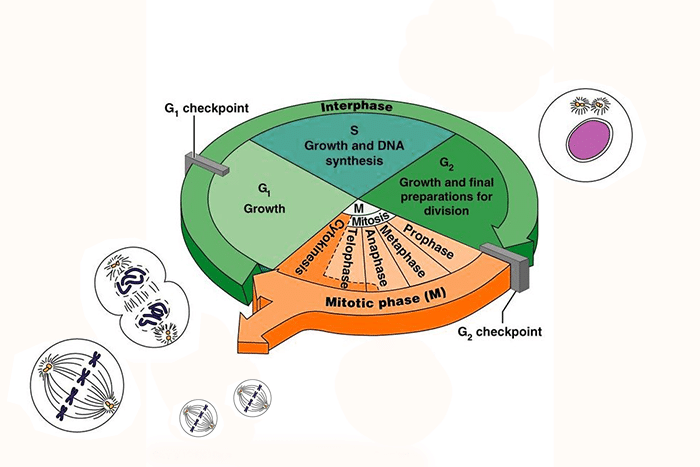A Complete Guide to Understanding the Cell Cycle

The cell cycle is a fundamental process that governs the growth and reproduction of all living organisms. It is a meticulously arranged sequence of events that ensures the accurate duplication of genetic material and the division of a single cell into two identical daughter cells. Understanding the cell cycle is crucial in biology and holds immense importance in healthcare, especially molecular diagnostics laboratories.
What Is a Cell Cycle?
The cell replicates its genetic material and divides into two new cells during a repeating sequence of events known as the cell cycle. This cycle consists of two primary phases: interphase and mitosis. Interphase is the longest phase of the cycle and is a time of cell growth and duplication of DNA and organelles. Mitosis represents the actual cell division stage. There are checkpoints built into the cycle to ensure errors are corrected, and DNA is accurately replicated before proceeding to the next phase. Understanding the timing, regulation, and purpose of each phase is key to comprehending the cell cycle as a whole.
What Are the Phases of The Cell Cycle?
Now that we have an overview, here are the specific events occurring in each phase of the cell cycle:
Interphase consists of three main phases:
G1 Phase
This phase marks cell growth and preparation for DNA synthesis. Cells assess the internal and external environment to determine if conditions are right for division. Important cellular organelles are duplicated during this time.
S Phase
DNA replication occurs during this synthesis phase. In other words, the DNA of a cell doubles. Histones and other DNA-packaging proteins are also produced to help organise the genetic material.
G2 Phase
More cell growth occurs at this stage, along with preparation for mitosis. Cytoskeleton components like microtubules are assembled to help pull replicated chromosomes apart.
After interphase comes mitosis and cytokinesis, which together make up the M phase of the cell cycle:
Mitosis
The duplicated DNA condenses into chromosomes that align at the centre of the cell. Microtubules attach to the chromosomes and pull the identical sets apart. The nuclear envelope breaks down and reforms around the separated DNA.
Cytokinesis
The cytoplasm divides in two, distributing organelles and cytoplasm into each new daughter cell. The result is two genetically identical cells.
Cell Cycle Control Systems
Tight cell cycle regulation is critical; otherwise, uncontrolled cell division can lead to cancer. Control mechanisms include cyclins, cyclin dependent kinases, and checkpoints.
Cyclins and Cdks
These proteins work together to drive cells through the phases. Cdks are present throughout the cycle but must bind cyclins to become active. Different cyclins turn on at specific phases.
Checkpoints
Checkpoints assess cell size, genetic integrity, and environment before progression to the next phase. The G1 checkpoint is especially important in controlling entry into the S phase.
This covers the major events occurring during interphase and mitosis of the cell cycle. The orderly progression through these phases ensures proper cell growth, accurate DNA replication and segregation into new daughter cells. Disruption of the cell cycle machinery can lead to errors in these processes.
Additional Key Cell Cycle Components
Beyond the phases mentioned above, certain additional key players control the orderly progression through the cycle, such as:
· Cyclins – levels oscillate through the cell cycle and activate CDKs
· CDKs – kinase enzymes that drive transitions between phases
· Checkpoints – monitor cycle at key points to regulate passage into the next phase
· pRB, p53 – tumour suppressor proteins that inhibit cycle progression
· Telomerase – maintains telomere length needed for continued division
The Significance of the Cell Cycle in Healthcare
Understanding the cell cycle is not just a matter of academic interest; it has profound implications for healthcare, particularly in molecular biology. Here’s why:
1. Cancer Diagnosis and Treatment:
Cancer involves abnormal and unchecked multiplication of cells in the body. By studying the cell cycle, healthcare professionals can better understand the mechanisms behind cancer development and identify potential targets for therapy. Molecular diagnostics laboratories, equipped with advanced technologies like the FilmArray and GeneXpert, play a crucial role in analysing cell cycle-related biomarkers to aid in cancer diagnosis and treatment.
2. Drug Development:
Pharmaceutical companies rely on a deep understanding of the cell cycle to develop drugs that target specific phases or components of the cycle. These drugs treat a broad range of diseases, from cancer to autoimmune disorders.
3. Genetic Disorders:
Many genetic disorders are caused by mutations that disrupt the normal sequence of the cell cycle. Understanding these disruptions can help in the diagnosis and management of these disorders.
4. Fertility and Reproductive Health:
The cell cycle is vital in processes like meiosis, which is responsible for the formation of eggs and sperm. Issues in the cell cycle can lead to infertility or genetic abnormalities in offspring. Molecular diagnostics laboratories provide essential testing and analysis in this context.
At Helvetica Health Care, we aim to provide efficient testing and diagnostics products that enhance molecular research. Our range of MOLECULAR TESTING PLATFORMS AND ASSAYS are designed to assist in exploring cell research.
We provide EXTERNAL RUN CONTROLS, NAT controls, panels and serology controls, designed to validate your molecular testing. Using these external controls helps you create confidence and assure consistent molecular results while complying with ISO15189:2012, an internationally recognised standard and a valuable resource for medical laboratories.This leads to better patient safety and quality outcomes and confirms the competence of medical laboratories by customers, regulating authorities and accreditation bodies’ competence.
NATtrol™ products are non-infectious, refrigerator stable and supplied in liquid format, ready to use. They are open system and can be used across different molecular testing platforms.
Visit the Helvetica Health Care to know more about what we do.

